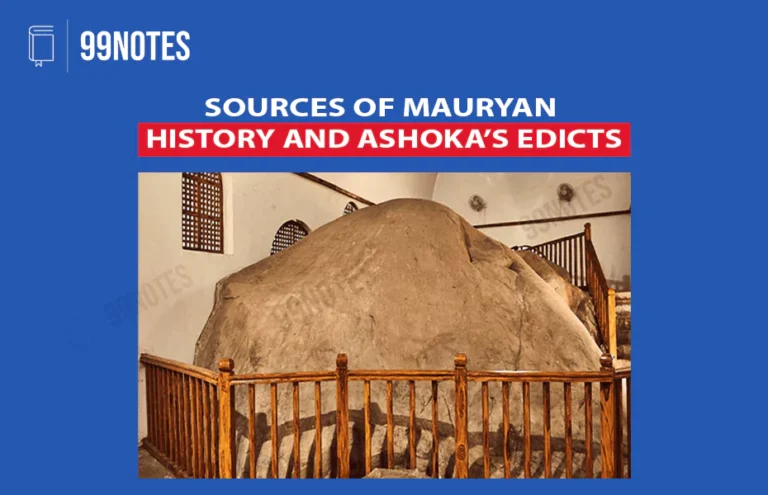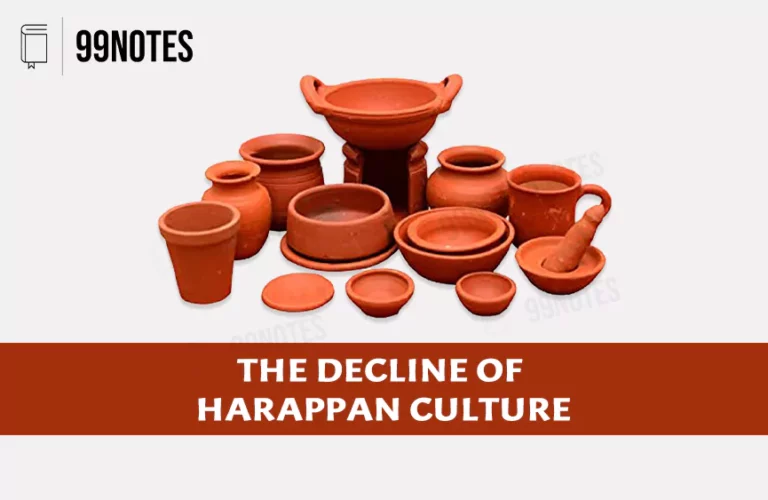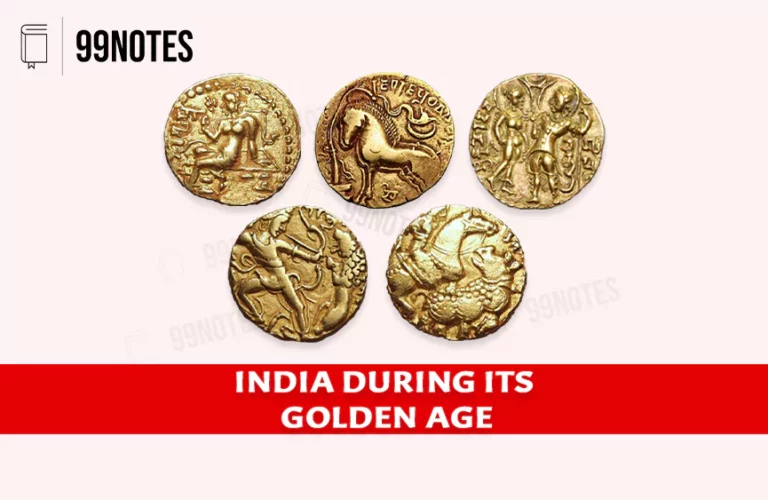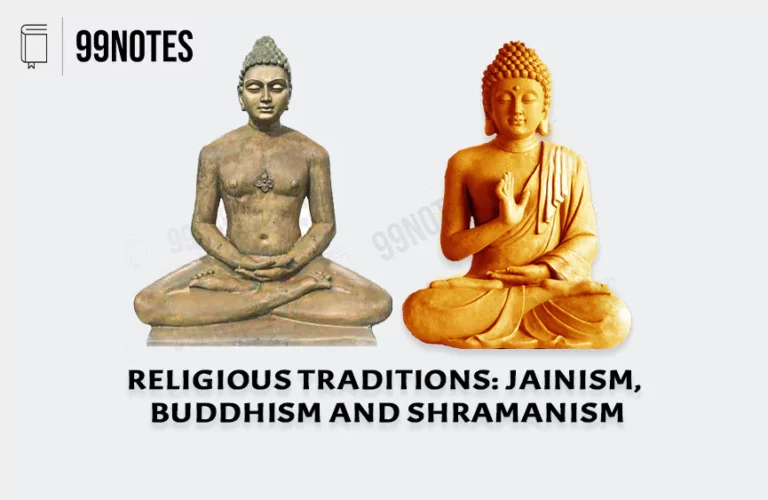What is History? Sources & Types of History
What is History?
The word history is derived from the ancient Greek word ‘Historia’, which translates into “an inquiry”. Thus the knowledge acquired by the investigation of the events of the past is history. In simple terms, it is the enquiry of the ‘human past’.
Types of History
History is divided mainly into 6 types: Political History, Diplomatic History, Cultural History, Social History, Economic History, and Intellectual History.
- Political History: Focuses on governance, power, and political events.
- Diplomatic History: Studies international relations, treaties, conflicts, and diplomacy.
- Cultural History: Explores art, literature, music, religion, and traditions.
- Economic History: Focuses on trade routes, economic policies, and industrialization.
- Social History: Studies social interactions, class dynamics, and cultural practices.
- Intellectual History: Explores the evolution of ideas, philosophical developments, scientific advancements, cultural ideologies and intellectual movements.
Classification of the timeline in historical studies
Historians have classified the study of history into the following divisions based on the tools used in different ages, knowledge of writing and modes of communication: –
- Pre-history – It consists of the events that occurred before theinvention of writing. It is further classified as: –
- Palaeolithic age or the Old Stone Age: The Greek word ‘lith’ refers to stone. It was the time when people first started using stone tools. It extends from 2,500,000 Million years ago (MYA) to 11,700 years ago. In this age, the tools used were unpolished and rough stones. This age features the evolution of proto-humans to humans.
- Mesolithic Period, or the Middle Stone Age – extends from 11,700 years ago to 6000 BCE. The time frame is different for different regions in the world. There is a prevalence of microliths (miniature stone tools) in this age, and by its end, people had started domesticating animals and cultivating plants.
- Neolithic Period or the New Stone Age: The beginning of cultivation and the end of the hunting and gathering phase is the distinguishing feature of this age. It generally extends from 6000 BCE to 1000 BCE in most regions of the world. People used microlithic blades, polished stones, and weapons made of bones. People started living in rectangular or circular houses.
- Chalcolithic Period or the Stone-Copper Age: The prefix ‘Chalco’ comes from the Greek word khalkos, meaning ‘copper’. At around 3000 BCE, people started using copper along with stone tools. This was the first time when metal was used. This led to an improvement in cultivation techniques, and people began growing cereals, pulses and cotton, apart from increased domestication of animals.
- Proto-history – refers to the civilisation phase of history before the invention of writing. Such civilisations find mention in the writings of other contemporary literate cultures. Even those cultures that had some mode of written communication but did not develop into fully functional languages are also classified as Proto-historical periods.
For example – the Indus valley civilisation (IVC) valley script remains deciphered, but it is mentioned in the writings of the Mesopotamian civilisation. Therefore, it is classified as a proto-historical civilisation.
- History – It consists of events that occurred after the invention of writing. Therefore, it enables us to reconstruct the actual events of the past on the basis of written records and archaeological sources. For example – the Edicts of the Ashokan period are an essential source for reconstructing the society, religion, polity and economy of the past.
Classification of the Historical Period:
The Historical period is further divided into loosely defined broad sub-periods, wiz. Ancient History, Medieval History, Modern Age, and the contemporary age.
- Ancient History: It is generally classified as the history before the invention of paper. In this age, we generally study inscriptions on metal plates, rocks and monuments. It also includes written artefacts on leaves.
- Medieval History: Generally, the period between 500AD and 1500AD is considered medieval history. However, in India, Medieval history extends from the 11th Century to the middle of the 18th Century (1750). This period saw the introduction and gradual adoption of paper. Therefore the text records increased dramatically, which is the primary source of reconstruction of medieval history. These include judicial records, a record of taxes and accounts, chronicles and religious texts.
- Modern History: In European History, the period after the end of the middle ages (1500AD) is referred to as the Modern era. Similarly, in the study of Indian history, the age after the decline of the Mughals till the Indian Independence is known as Modern History. It roughly corresponds to the British rule in India.
- Contemporary History: Indian History after the Indian Independence in 1947 is generally known as post-Independence History or Contemporary History. However, many world historians include the history of the world wars too in this period.
Sources of Indian History
“Historical sources” are such objects and documents that contain some historically significant information. The sources of history help us to reconstruct the societies of the past and thus assist us in understanding ancient society better. These can be classified under various heads.
Classification based on originality of sources: –
- Primary sources – All archaeological evidence and the written records which were part of the history are primary sources. For example – Harappan seals, Kushan coins, etc.
- Secondary sources – The sources which are based on analysis of primary sources or are the description of primary sources are secondary sources. For example – the books written by historians and chronicles.
Classification of sources
Based on the type of evidence of history, the sources of history can be of five following types: –
- Literary Sources – These sources are written forms of information such as books, letters, etc. For example – ‘Rajatarangini’ of Kalhana, written in Sanskrit, gives a historical chronology of north-western Indian rulers. Literary sources can be further divided into: –
- Indigenous sources – These sources are based in India. For example – books are written by Indian writers – Astadhyayi by Panini. Based on content, indigenous sources can further be divided into two: –
- Secular theme-based sources – Some literary sources are non-religious in nature.
- Biographical works – contain details on some eminent persons of history, for Example –Akbarnama by Abu’l-Fazl.
- Scholarly Books – Such as – Arthashashtra by Kautilya, contains details about Mauryan Political economy.
- Poetry and dramas – contain details about Indian society in the form of drama or poetry. For example, Silapaddikaram tells us about Tamil society.
- Government and Judicial records – These documents record the working of the government of the age.
- Secular theme-based sources – Some literary sources are non-religious in nature.
- Non-secular theme-based sources – These sources are based on religion. For example – Brahmanical texts, Buddhist Tipitaka etc. These are often more biased than the secular sources of history.
- Foreign Sources – Foreign writers often record critical information in their books. Such sources can be written by: –
- Foreign travellers – These contain an account of those travellers who visited India. For example – The account of the Chinese traveller Hiuen Tsang tells us about the reign of Harshvardhan in 629AD.
- Foreign invaders, politicians and diplomats– Such sources show the political view of India. For example, Megasthanese was a 4th Century BCE Greek diplomat who wrote extensively on Indian polity and society.
- Other foreigners – These are the foreigners who did not come to India but wrote about Indian society. For Example – Ptolemy’s book Geography(150AD) has details on ancient Indian society.
- Archaeological Sources – These sources are material evidence from the past, such as monuments, sculptures, coins, etc. For example – Ashokan pillar inscriptions tell us about society during the Mauryan rule. Archaeological sources can be further divided into: –
- Indigenous sources – The material evidence found in India are indigenous sources of history. These can be further divided into three categories: –
- Pottery – For example, Painted Grey Ware (PGW) is an indication of the Later Vedic age.
- Inscriptions – such as on Ashokan pillars.
- Coins and Seals – Kushan coins show that they were Krishna devotees.
- Monuments – For example, the Nalanda ruins illuminate ancient India’s education system
- Foreign Sources – such material evidence are found in foreign countries. For example – The boghaz-Koi inscription found in Turkey tells us about the Vedic culture.
- Palaeontological sources – Palaeontologists study fossils and the interactions between organisms and the environment. For example – Arun Sonakia’s discovery of the skull of the Narmada man threw light on the evolution of humans in South Asia.
- Linguistic theories – These theories try to explain past societies by studying the classifications and origin of language. For example, linguistic theories help us understand humans’ historical migration patterns. Such studies show us that there are four families of Indian languages: –
- Indo-European languages: Assamese, Gujarati, Hindi, Kashmiri, and Sindhi in India, and English, French, German, Greek, Italian, and Spanish in other countries.
- Tibeto-Burman family: Himalayan and North Eastern languages – Garo, Lepcha, Chamba, etc.
- Dravidian family: Tamil, Telugu, Kannada, Malayalam.
- Austro-Asiatic Family: Parts of Jharkhand and Central India.
- Biological studies – These sources are genetic studies that try to understand history by studying DNA and race. Such studies help us understand humans’ historical migration. These studies revealed the following migration pattern of different in India: –
- Negrito – The Negritos from Africa were the earliest people to inhabit India. They came to India around 65,000 years ago. They survived in their original habitat in the Andaman and Nicobar Islands (Onge, Jarawa and Sentinelese tribes)
- Pro-Australoid or Austric group came around 9000 to 5000 years ago. They are suspected as the main builders of the Indus Valley Civilisation. Examples of the group are Santhal, Bhil, Gond, Munda, and Oraon tribes.
- Mediterranids – They came to India from the eastern Mediterranean region or South West Asia. They inhabited the Harappan civilisation with the Proto-Australoids. Presently they are in south India and north India.
- Brachycephals (meaning broad-headed) – They entered India from the west. Examples – The Parsis and Kodavas, Banias of Gujarat, and Kayastha caste of West Bengal.
- Nordics (Aryans) – originated from the steppes and entered India through Central Asia around 2000 and 1500 BC. Presently they are scattered in different parts of Northern India, especially Punjab, Haryana and Rajasthan.
- Mongoloids – came from China in several waves and entered India through the passes in the northern and eastern mountains. Presently they are in Ladakh, Sikkim, Arunachal Pradesh and other parts of East India, such as tribes of Garo, Khasi, Jaintia, Lepchas, Chakmas, and Naga.
Explore additional significant articles on Ancient Indian History listed in the table below:


![Mauryan Empire (321-185 Bce): Rulers, Map, &Amp; Administration [Complete Notes For Upsc Exams] | Updated November 17, 2024 Mauryan Empire (321-185 Bce): Rulers, Map, &Amp; Administration [Complete Notes For Upsc Exams]](https://99notes.in/wp-content/uploads/2023/04/mauryan-empire-99notes-upsc-1-768x495.webp)




